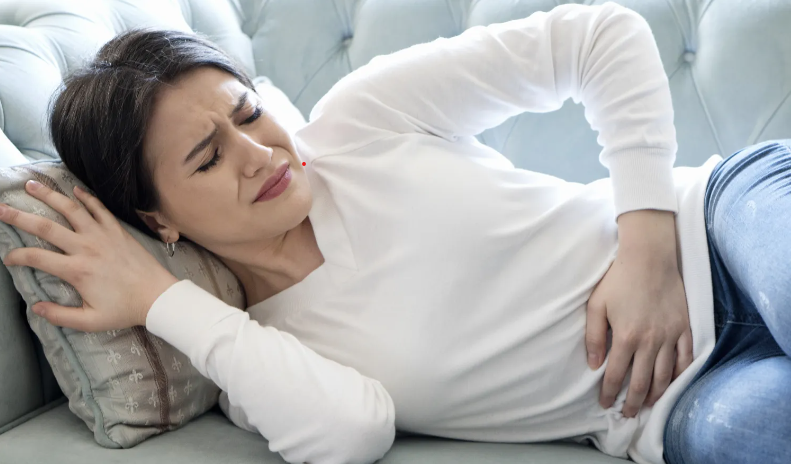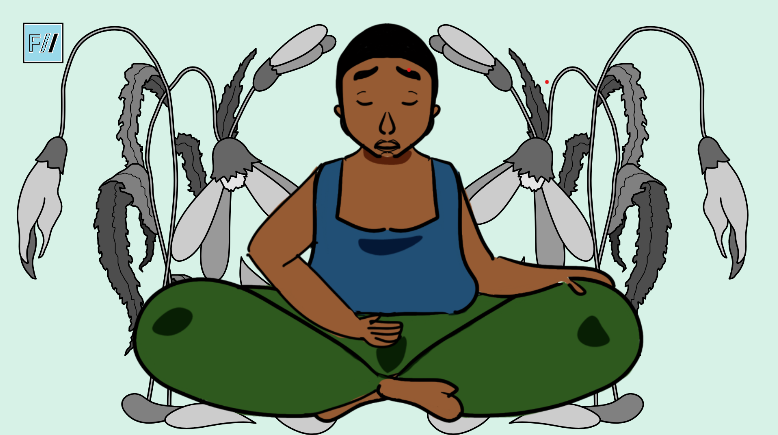PMS mood fluctuations, a global public health issue, researchers say
September 07, 2022 By Awanish Kumar

(Image Credit Google)
A recent study found that premenstrual anxiety and mood fluctuations are so prevalent that they are considered a "major public health issue globally." According to University of Virginia researchers, 64% of women report having these symptoms.
According to their research, the majority of women have premenstrual syndrome (PMS) symptoms each menstrual cycle, and these symptoms frequently interfere with their daily life. Mood swings or worry are among the most frequently reported PMS symptoms, regardless of age. Across all age groups, at least 61 percent of women report mood-related symptoms during every menstrual cycle. Researchers explain this suggests “that premenstrual mood symptoms are a key public health issue globally.”
This "suggests that premenstrual mood problems are a serious public health issue globally," according to researchers.
A recent study found that premenstrual anxiety and mood fluctuations are so prevalent that they are considered a "major public health issue globally." According to University of Virginia researchers, 64% of women report having these symptoms.
According to their research, the majority of women have premenstrual syndrome (PMS) symptoms each menstrual cycle, and these symptoms frequently interfere with their daily life. Mood swings or worry are among the most frequently reported PMS symptoms, regardless of age. At least 61% of women of all ages report experiencing mood-related symptoms at least once per cycle. This "suggests that premenstrual mood problems are a serious public health issue globally," according to researchers.
 PMS symptoms can change with age
PMS symptoms can change with age
Food cravings were the most often reported premenstrual symptom (85.28%), followed by worry or mood changes (64.18%) and exhaustion (57.3%). Additionally, 28.61 percent of those surveyed admitted that every menstrual cycle, their premenstrual symptoms interfered with their everyday life. Another 34.84 percent of respondents reported that premenstrual symptoms occasionally interfered with their daily routines.
According to Dr. Payne, "the reported prevalence of premenstrual mood and anxiety symptoms varied greatly by nation, with a low of 35.1% in Congo and a high of 68.6% in Egypt. Understanding the biological or cultural factors that contribute to country-level rates will be a key area of future research, according to the study.
The study's authors observe that older participants reported a variety of PMS symptoms substantially more frequently. Absent-mindedness, poor libido, sleep issues, gastrointestinal issues, weight gain, headaches, sweating or hot flashes, exhaustion, hair changes, rashes, and swellings were some of these symptoms. The higher prevalence of physical symptoms among older women "makes sense," according to the study's authors, because many of these symptoms are associated with perimenopause, a time of transition to menopause that can result in irregular menstrual cycles.
By Awanish Kumar
I keep abreast of the latest technological developments to bring you unfiltered information about gadgets.


 PMS symptoms can change with age
Food cravings were the most often reported premenstrual symptom (85.28%), followed by worry or mood changes (64.18%) and exhaustion (57.3%). Additionally, 28.61 percent of those surveyed admitted that every menstrual cycle, their premenstrual symptoms interfered with their everyday life. Another 34.84 percent of respondents reported that premenstrual symptoms occasionally interfered with their daily routines.
According to Dr. Payne, "the reported prevalence of premenstrual mood and anxiety symptoms varied greatly by nation, with a low of 35.1% in Congo and a high of 68.6% in Egypt. Understanding the biological or cultural factors that contribute to country-level rates will be a key area of future research, according to the study.
The study's authors observe that older participants reported a variety of PMS symptoms substantially more frequently. Absent-mindedness, poor libido, sleep issues, gastrointestinal issues, weight gain, headaches, sweating or hot flashes, exhaustion, hair changes, rashes, and swellings were some of these symptoms. The higher prevalence of physical symptoms among older women "makes sense," according to the study's authors, because many of these symptoms are associated with perimenopause, a time of transition to menopause that can result in irregular menstrual cycles.
PMS symptoms can change with age
Food cravings were the most often reported premenstrual symptom (85.28%), followed by worry or mood changes (64.18%) and exhaustion (57.3%). Additionally, 28.61 percent of those surveyed admitted that every menstrual cycle, their premenstrual symptoms interfered with their everyday life. Another 34.84 percent of respondents reported that premenstrual symptoms occasionally interfered with their daily routines.
According to Dr. Payne, "the reported prevalence of premenstrual mood and anxiety symptoms varied greatly by nation, with a low of 35.1% in Congo and a high of 68.6% in Egypt. Understanding the biological or cultural factors that contribute to country-level rates will be a key area of future research, according to the study.
The study's authors observe that older participants reported a variety of PMS symptoms substantially more frequently. Absent-mindedness, poor libido, sleep issues, gastrointestinal issues, weight gain, headaches, sweating or hot flashes, exhaustion, hair changes, rashes, and swellings were some of these symptoms. The higher prevalence of physical symptoms among older women "makes sense," according to the study's authors, because many of these symptoms are associated with perimenopause, a time of transition to menopause that can result in irregular menstrual cycles.






